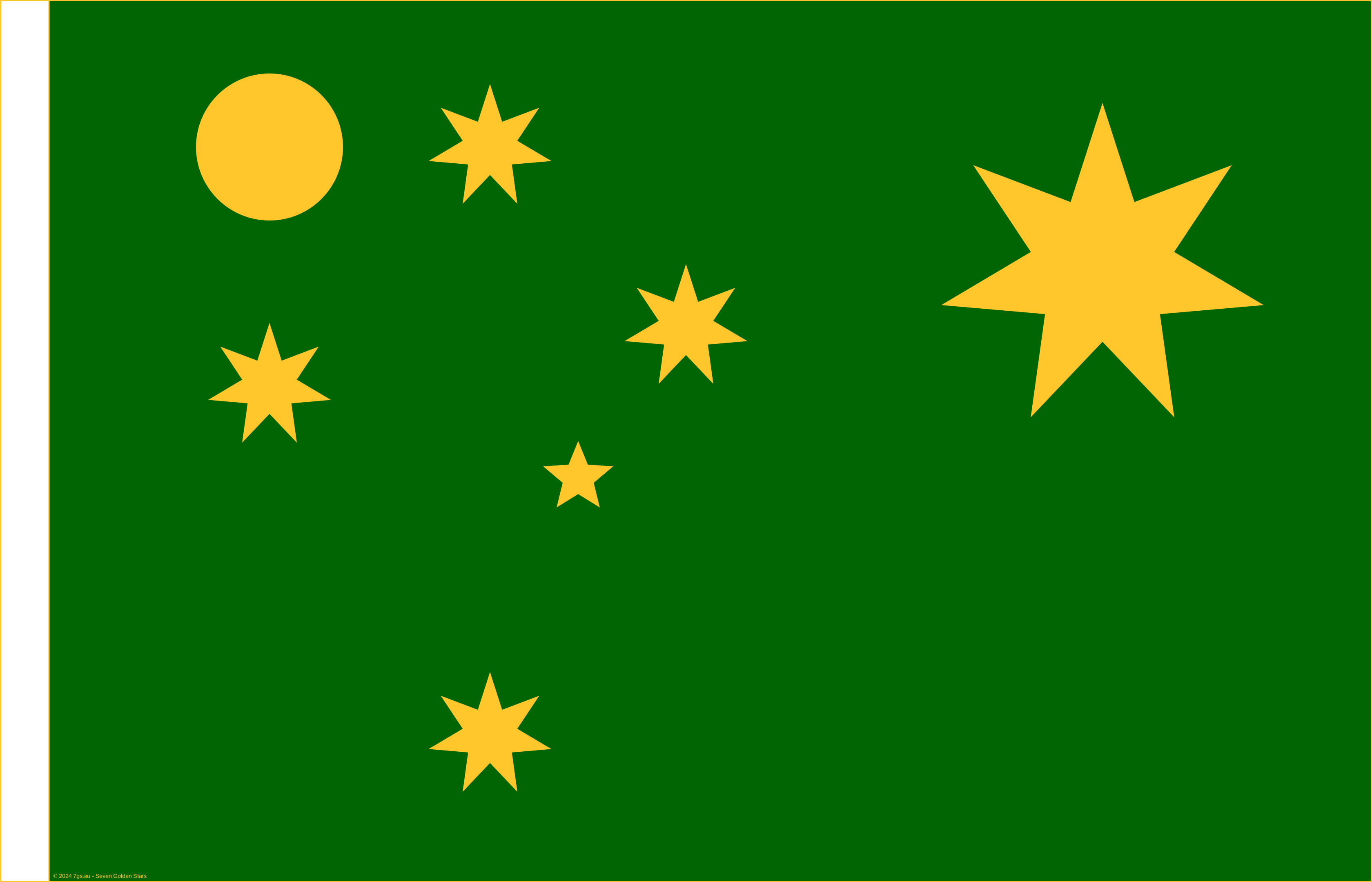
Becrux Precession Icon

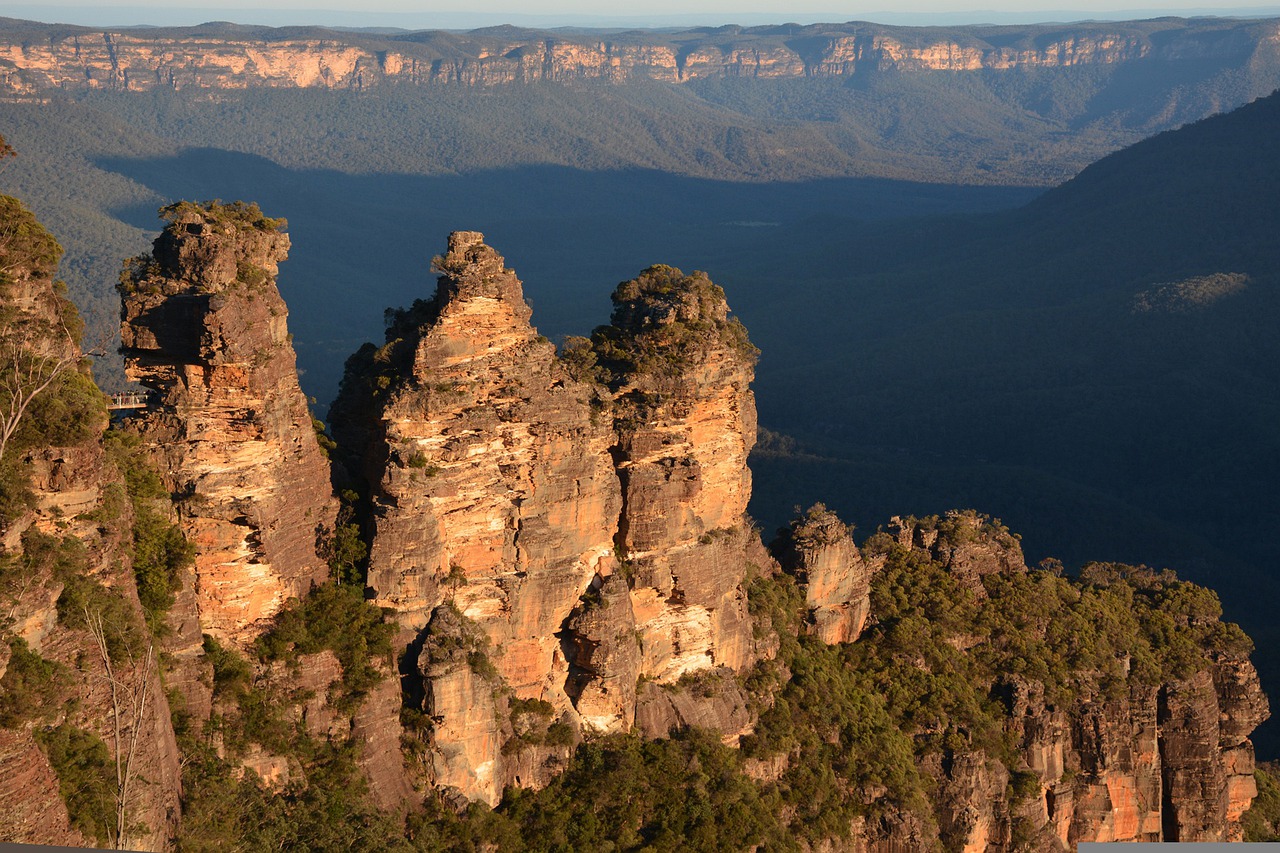

An Australian flag that that recognises and honours the First Nations


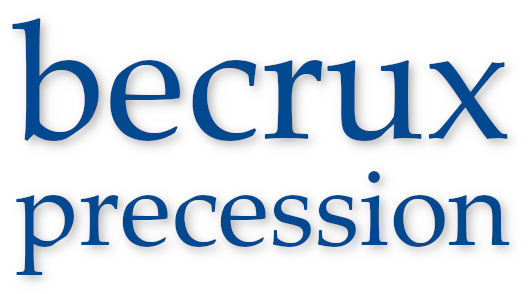
A different vision: Guided by the Southern Cross
Becrux is the second brightest star in the Southern Cross. It is also known as Mimosa.
Precession is a change in the orientation of the rotational axis of a rotating body. https://en.wikipedia.org/wiki/Precession
As we all know, the earth completes one daily rotation every 24 hours. The axis of rotation runs through the north and south poles. The axial precession of the earth (also known as precession of the equinoxes) changes the orientation of the north and south poles over time. For the earth, this cycle repeats approximately every 26,000 years. There is a fascinating story of how precession with regard to the Southern Cross shaped the modern world.
Becrux Precession is the trading name for an Australian company specialising in robotics.
Is there a way for a group of citizens to initiate a review of a parliamentarian’s right to sit in the House of Representatives under Section 44 through a petition to the High Court?
This is in relation to the AUKUS Pact, and the Defence Ministers who are responsible for this: Perter Dutton as Defence Minister in the Morrison government,and Richard Marles in the Albanese government.
In an article in today’s Guardian (9/03/2025) it seems that the United States is planning not to sell any submarines to Australia, but instead intends to use the submarine bases established in Australia under AUKUS for the use of USA commanded and owned nuclear submarines.
‘The report says the US needs to build new submarines at a rate of 2.3 each year to meet its own needs, as well as provide submarines to Australia. Since 2022, it has built boats at about half that rate: 1.2 boats a year.
Under an alternative proposed in the paper, the US would not sell any submarines to Australia; instead, it would sail its own submarines, under US command, out of Australian bases.’
The Australian Naval Nuclear Power Safety Act 2024 establishes nuclear waste dumps at HMAS Stirling (just south of Perth) and at Osborne (under 25km from the Adelaide CBD) for use by US nuclear submarines as an initial stage of setting up naval bases under the AUKUS Pact.
It is possible that Australia will never own and command a nuclear powered submarine built in the United States. The transfer of technology that would allow Australia to build its own nuclear powered submarines – competently and successfully – would also be at risk. The UK nuclear submarines under AUKUS have not even completed their design phase.
The AUKUS agreements have damaged Australia’s defence capabilities. The contract to build French submarines to replace the ageing Collins class fleet was cancelled, leaving a sizeable gap in hardware pending the arrival of US built attack submarines under AUKUS – which may never arrive.
Australia is defenceless against the will of the United States if they are set on establishing military bases in Australia, dumping their radioactive waste in Australia, or if they are intent on exploiting Australia’s natural resources and critical minerals.
Many of the consultants employed to develop the AUKUS program were retired US Admirals. You would assume their primary loyalty is always to America.
Perhaps the Australian Defence Ministers were deceived and misled, perhaps they were tricked.
We face the prospect under the AUKUS Agreement where Australia has lost defence capability and a foreign nation has designs to establish military bases near Perth and in Adelaide, for the use of its own military. This is an attack on Australian sovereignty. Contrary to expectation, it looks like AUKUS will not deliver any defence hardware or added capability for Australia, but it will instead be a mechanism to enable a foreign nation to establish military and naval bases under the complete command of that foreign nation on Australian land.
This is clearly not in Australia’s interest, and we need to establish whether AUKUS was pursued under any acknowledgment of allegiance, obedience, or adherence to a foreign power.
On balance in light of the latest information about AUKUS, the ministers who are responsible for the AUKUS Agreement may be ineligible to sit in parliament under Section 44. Even if they were tricked into working against Australia’s national interest, they are still responsible. If they will not resign, the High Court needs to look into their eligibility to sit.
The question is what is needed to have the High Court examine this matter?
We could petition the Governor-General. She could decide to ignore it, continue to work under the advice of the Prime Minister, or perhaps set up a royal commission into the matter. It would be exceptional for the Governor-General to go any further. I guess that if the Governor-General were to refer this matter to the High Court, this would be seen as an exercise of reserve powers.
The government and opposition would never admit they were both taken for a ride.
Perhaps we could even appeal to King Charles III as the King of Australia and the sovereign who would be violated by the establishment of foreign military bases in Australia. It is against convention, however, and would be extremely controversial for the King to act on a matter like this. Such an act would possibly trigger the removal of the monarchy in Australia.
Can citizens raise the issue with the High Court? If so, what are the likely costs? I imagine that it would be prohibitively expensive.
AUKUS is the greatest threat to Australian sovereignty since the Second World War.
Here is a comment that keeps being removed automatically from Youtube comments to the Constitutional Clarion. I am publishing is here and will try to post a link to Youtube comments (but it still doesn’t work)
***
@constitutionalclarion1901 Thank you, Professor Twomey
You mention in an article “The Queen of Australia” from 2007
https://classic.austlii.edu.au/au/journals/SGSocUphAUCon/2007/12.html
“Some of the confusion about the status of the Crown arises because the same term is used to describe a number of different concepts. As the High Court pointed out in Sue v. Hill, the different meanings of Crown include:
1. The Sovereign’s regalia;
2. The body politic;
3. The international personality of a body politic;
4. The “government” or “executive”; and
5. The Sovereign’s powers with respect to a body politic.”
I assume these are some of the range of different meanings of the Crown in Australia.
The Australian body politics are modern democracies. Some people may feel embarrassed about the meanings of the ‘Crown of Australia’ as they also refer to 1. the Sovereign’s regalia (symbols of monarchy), and 5. The Sovereign’s powers with respect to a body politics. They seem to conflict or contrast with the other meanings (2, 3, & 4).
Perhaps we could image a purely hypothetical future where Australia has replaced the monarchy with democratic rules of succession so that an Australian is elected to serve a fixed term in office as head of state to replace the monarch – under the divisible Crown of Australia only. We keep the Crown of Australia, make it democratic for elected fixed terms, and leave everything else as it is.
The elected head of state would be head of state for the Commonwealth and all six states simultaneously. The biological ‘person’ elected as Australia’s head of state provides the personal unity of the Crowns in Australia, just as the monarch does with the notion of a divisible Crown for the realms. The elected head of state must abide by long-standing Westminster conventions to remain above politics and the office would be purely ceremonial.
In that hypothetical future, the meaning of 1. the Sovereign’s regalia will morph into symbols of Australian democracy, and meaning number 5. The Sovereign’s powers with respect to the body politics will become the elected head of state’s powers with respect to the body politics. All five meanings of the Crown in Australia listed in Sue vs Hill 1999 would become congruent and will affirm Australia as a modern democratic nation.
The ‘Crown of Australia’ would no longer be cringe-worthy, but be seen as highly valued and esteemed in our democratic system of government. The Crown would no longer be viewed as something like a chameleon.
The elected head of state would be seen as the face of Australia’s international personality as a body politics. I think it would work.
If anyone is interested in an an outline for an Australian republic where we try to democratise the ‘Crown of Australia, here is a link:
https://7gs.au/wp-content/uploads/2025/01/Ugly_Duckling_20250105.pdf
The Commonwealth of Australia gained independence from the British Crown on the 3rd of September, 1939 through the Statute of Westminster Adoption Act 1942.
The act of declaring war on right-wing extremists and fascism in Germany, defending democracy, and protecting civilians from state-enacted genocide is the defining ethos of the modern and independent nation of Australia.
The third of September is an appropriate day to celebrate Australia as a modern democratic nation.
Here is a scan of the Act from https://www.foundingdocs.gov.au/item-sdid-96.html
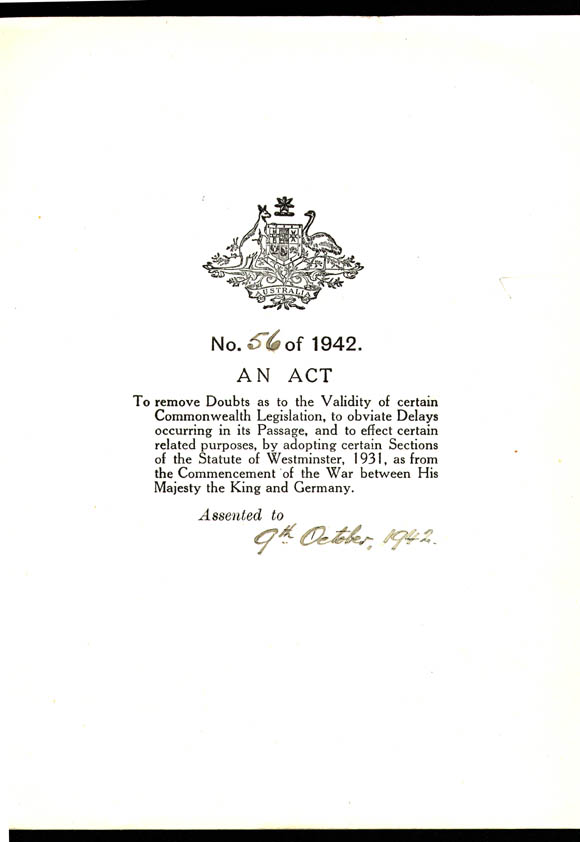
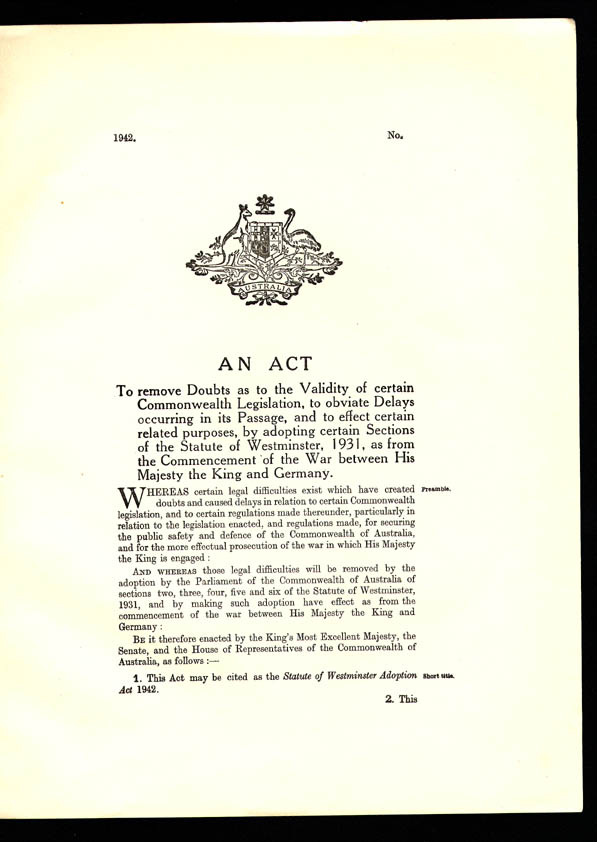
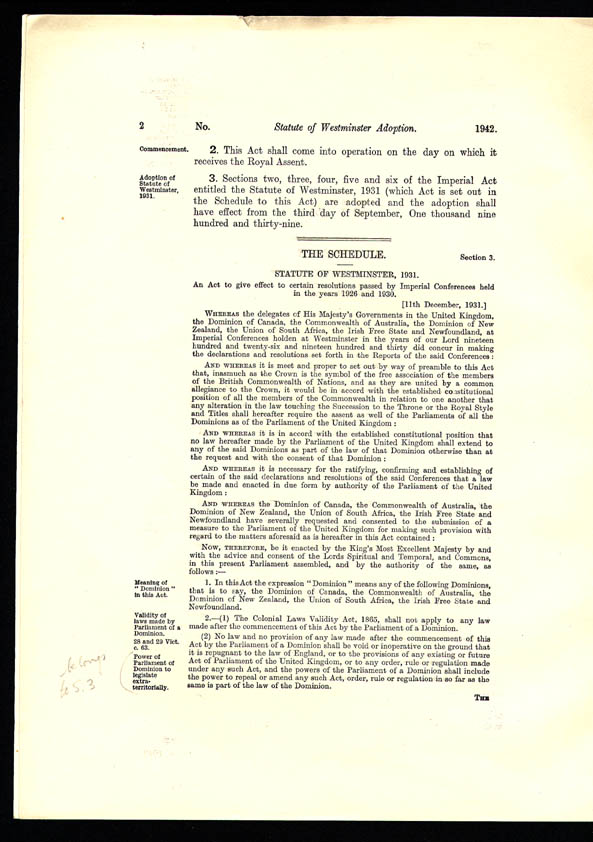
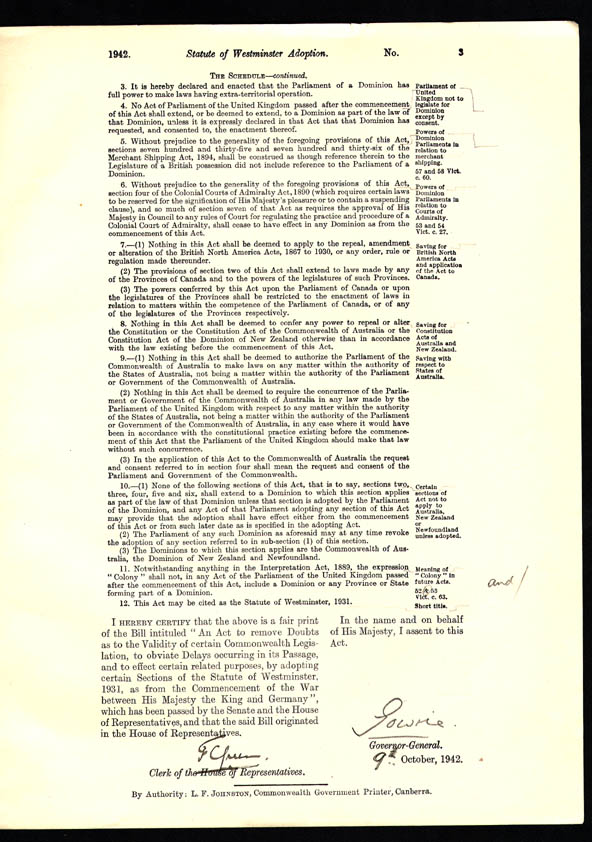
These colours look striking
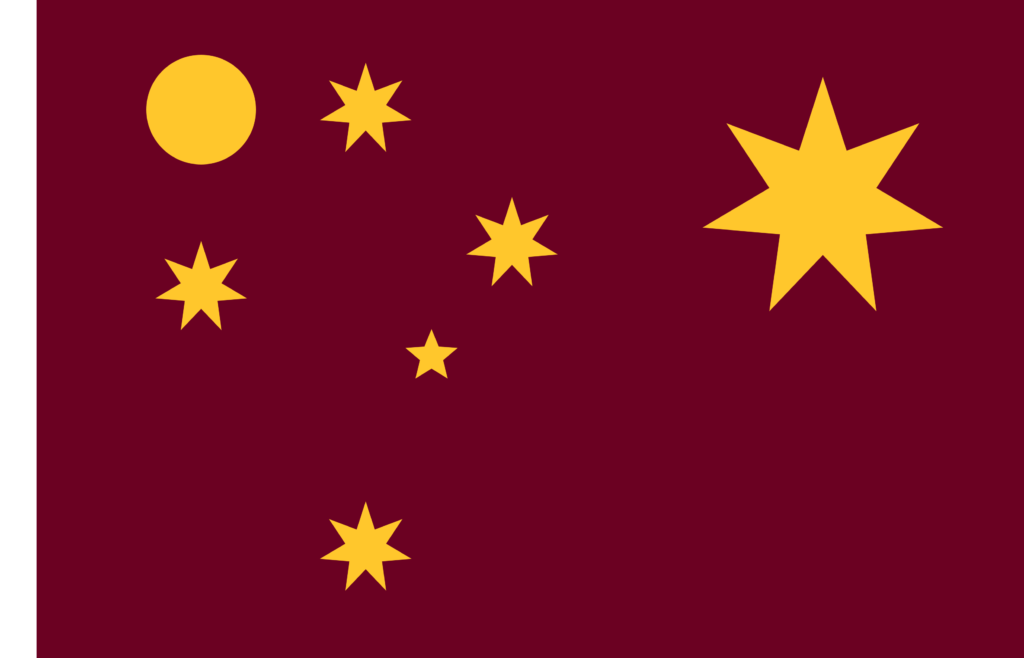
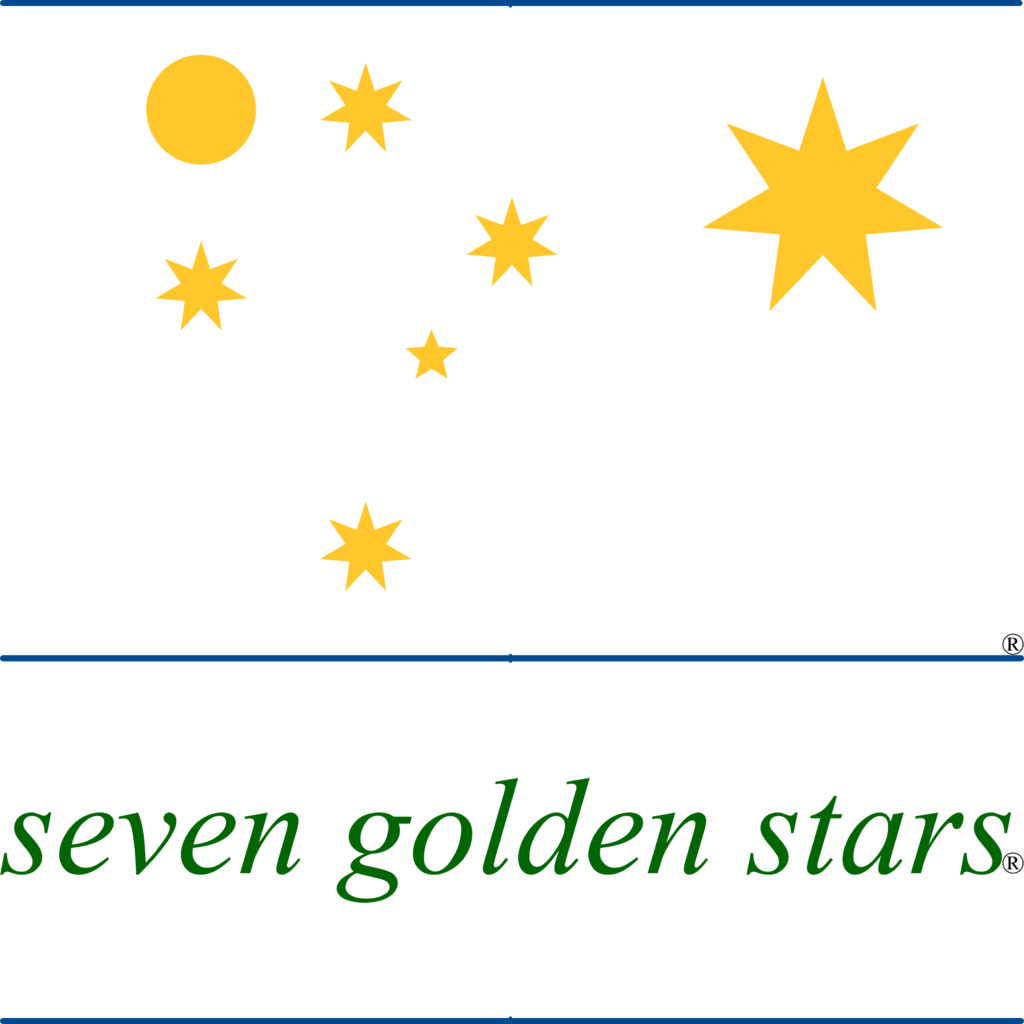
“Seven Golden Stars” is now registered as both a word and an image trademark with IP Australia. This logo contains both trademarks.
In Australia there is ambiguity about the nature of the Crown. The question whether there are divisible Crowns in right of the states is contested with the notion that there could be a Federal Crown.
Many people still think that the Crown in Australia is the old imperial British Crown of colonial Australia.
Perhaps the notion of a Federal Crown appeals to people who think of the Crown as being indivisible – as the old imperial British Crown was. Their model for the Crown may be that it is a monolithic institution.
So we need to consider that there are varying models of the Crown. Even if people accept that the Crown in Australia is independent of the British Crown since the Australia Acts 1986, there might be a lingering notion of the Crown in Australia as being monolithic.
What series of questions could help tease out the distinctions in these views about the Crown in Australia, and what are the perspectives that could widen people’s views on the matter?
